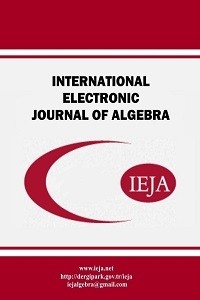When does a quotient ring of a PID have the cancellation property?
An ideal $I$ of a commutative ring is called a cancellation ideal if $IB = IC$ implies $B = C$ for all ideals $B$ and $C$. Let $D$ be a principal ideal domain (PID), $a, b \in D$ be nonzero elements with $a \nmid b$, $(a, b)D = dD$ for some $d \in D$, $D_a = D/aD$ be the quotient ring of $D$ modulo $aD$, and $bD_a = (a,b)D/aD$; so $bD_a$ is a nonzero commutative ring. In this paper, we show that the following three properties are equivalent: (i) $\frac{a}{d}$ is a prime element and $a \nmid d^{2}$, (ii) every nonzero ideal of $bD_a$ is a cancellation ideal, and (iii) $bD_a$ is a field.
___
- D.D. Anderson and M. Roitman, A characterization of cancellation ideals, Proc. Amer. Math. Soc., 125 (1997), 2853-2854.
- S. Chaopraknoi, K. Savettaseranee and P. Lertwichitsilp, Some cancellation ideal rings, Gen. Math., 13 (2005), 39-46.
- A. Geroldinger and Q. Zhong, Factorization theory in commutative monoids, Semigroup Forum, 100 (2020), 22-51.
- R. Gilmer, Multiplicative Ideal Theory, Marcel Dekker, Inc., New York, 1972.
- R. Gilmer, Commutative Semigroup Rings, Univ. Chicago Press, Chicago, 1984.
- ISSN: 1306-6048
- Yayın Aralığı: Yılda 2 Sayı
- Başlangıç: 2007
- Yayıncı: Abdullah HARMANCI
Sayıdaki Diğer Makaleler
Gaurav MITTAL, Rajendra Kumar SHARMA
Vincenzo DE FILIPPIS, Nadeem Ur REHMAN, Giovanni SCUDO
